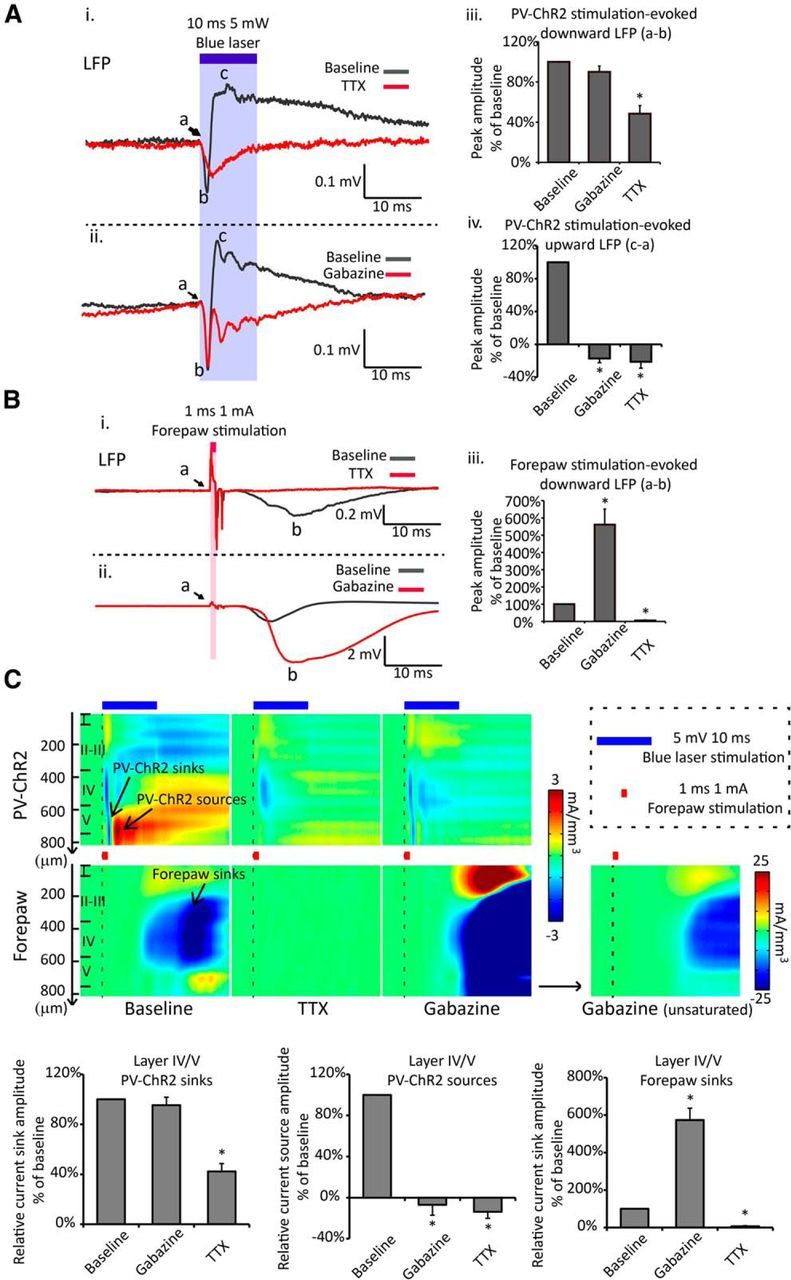Figure 4.

Pharmacological definition of PV-ChR2 stimulation-evoked LFP signals. A, Cortical application of 30 μm TTX partially suppresses the peak value of 10 ms, 5 mW light-evoked PV-ChR2 downward LFP signals [Ai, Aiii; peak value is calculated as the difference between the downward peak (b) and baseline (a)] and abolishes the light-evoked upward LFP signals (Ai, Aiv, c−a; c, upward peak; a, baseline value) in layer IV/V. Cortical application of 1 μm gabazine depresses the PV-ChR2 stimulation-evoked upward LFP signals (Aii, Aiv), while it does not significantly change the peak value of the downward LFP signals (Aii, Aiii) in layer IV/V. B, The same application of TTX or gabazine abolishes (Ai, Aiii) or amplifies (Aii, Aiii) the peak value of 1 ms, 1–1.5 mA forepaw stimulation-evoked LFP signals (b−a) at the same recording site, respectively, confirming the drug action deep input layers. C, CSD analysis of the PV-ChR2 stimulation-evoked and the forepaw stimulation-evoked responses through layer I to V confirms the conclusion from LFP measurements without potential far-field signal contamination. TTX partially suppresses the PV-ChR2 stimulation-evoked current sinks and abolishes the PV-ChR2 stimulation-evoked current sources in layer IV/V; gabazine abolishes the PV-ChR2 stimulation-evoked current sources in layer IV/V. All numbers are normalized to the value before drug application, mean ± SEM, *p < 0.001, RM-ANOVA, n = 5 for each drug. All traces in A–C are averaged from 20 to 30 repetitions. Some sweeps with occasional seizure-like depolarization in gabazine experiment were removed from the analysis.
